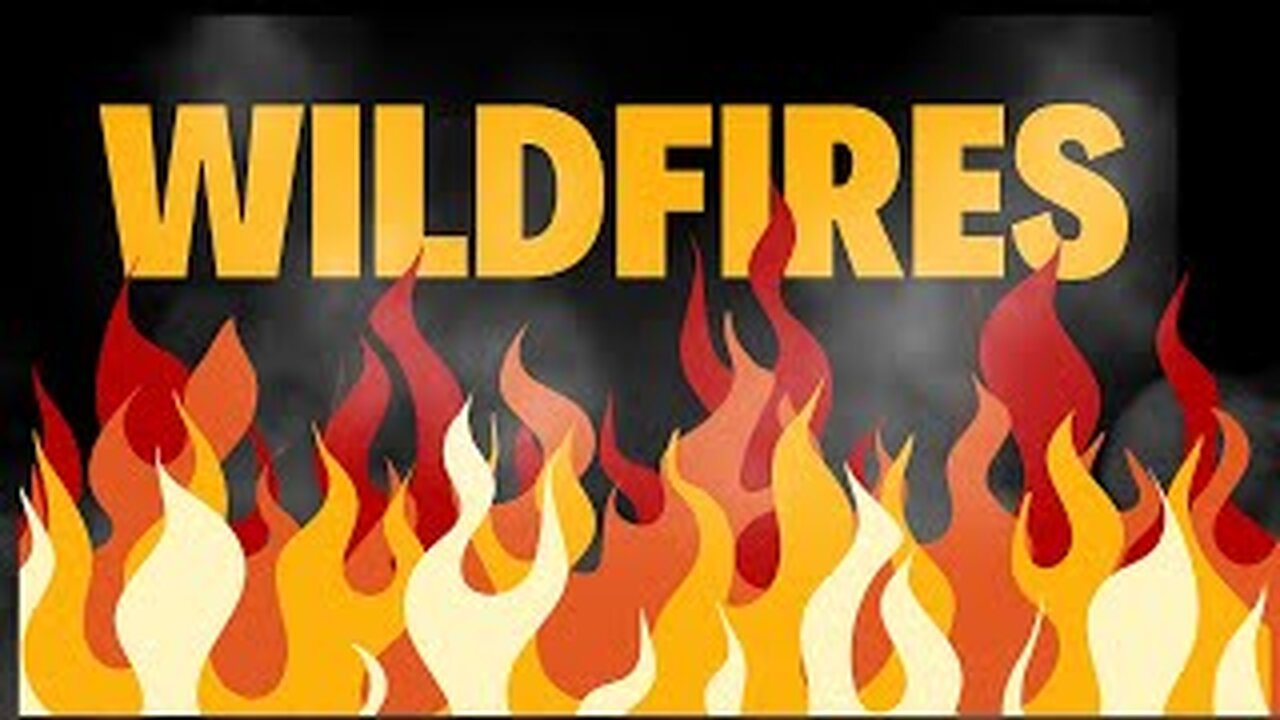Premium Only Content

Deadly Wildfires 🔥 | Largest Wildfires 🔥 and its Causes | Climate Change and Wildfires
#wildfire #climatechange #nature #usa #britishcolumbia #canada #greece #spain #hurricane
Wildfires, also known as forest fires, bushfires, or vegetation fires, are uncontrolled and rapidly spreading fires that consume vegetation, forests, grasslands, and other natural areas. These fires can be ignited by natural causes, such as lightning strikes, or by human activities, including discarded cigarette butts, campfires, equipment sparks, or intentional arson. Wildfires can vary greatly in size, intensity, and behavior, and they can have significant ecological, environmental, economic, and social impacts.
1. Fire Triangle:
To understand wildfires, it's helpful to consider the "fire triangle," which consists of three essential elements necessary for a fire to ignite and spread:
Fuel: This refers to the vegetation, dead leaves, grasses, trees, and other organic materials that can burn.
Oxygen: Fire requires oxygen from the air to sustain its combustion process.
Heat: Sufficient heat is needed to raise the temperature of the fuel to its ignition point.
2. Fire Behavior:
Once ignited, wildfires spread through a combination of direct flame contact, burning embers carried by wind, and the radiant heat emitted by the fire itself. Fire behavior is influenced by various factors, including:
Weather Conditions: Wind speed, humidity levels, temperature, and atmospheric stability play a crucial role in fire behavior. Dry, windy conditions can cause fires to spread rapidly.
Topography: The shape of the land, slope steepness, and the direction of the wind relative to the slope can impact fire spread.
Fuel Type and Moisture: Different types of vegetation have varying levels of flammability. Dry and dead vegetation ignite more readily than moist, live vegetation.
3. Ecological Impact:
While some ecosystems, like grasslands, have evolved with fire and even require it to regenerate, intense and frequent wildfires can have severe ecological consequences:
Biodiversity Loss: Wildlife habitats can be destroyed, leading to a loss of plant and animal species. Some species may struggle to recover, potentially leading to a decline in biodiversity.
Soil Degradation: Intense fires can lead to soil erosion and nutrient loss, which affects the fertility of the land.
Air Quality: Wildfires release large amounts of smoke and particulate matter into the air, which can have negative impacts on air quality and human health.
4. Environmental Impact:
Wildfires also have significant environmental implications:
Carbon Emissions: The burning of vegetation releases carbon dioxide and other greenhouse gases into the atmosphere, contributing to climate change.
Water Quality: Wildfires can impact water quality by increasing erosion and sediment runoff into rivers and streams.
5. Management and Prevention:
Efforts to manage and prevent wildfires involve a combination of strategies:
Firefighting: Trained firefighters use equipment, water, and firebreaks to control and extinguish wildfires.
Prescribed Burns: Planned fires are intentionally set in controlled conditions to reduce excess vegetation buildup, decreasing the likelihood of large and intense wildfires.
Education and Awareness: Promoting responsible behavior in fire-prone areas helps prevent human-caused fires.
In recent years, the frequency and severity of wildfires have increased in some regions due to factors like climate change, prolonged droughts, and land management practices. Understanding the science and impact of wildfires is crucial for developing effective strategies to mitigate their effects on ecosystems, communities, and the environment.
🌍 World on Fire: Ignite your understanding of the widespread issue of global wildfires. Our videos shed light on the alarming frequency, intensity, and geographic scope of these natural disasters.
🔍 Behind the Flames: Dive into the science behind wildfire ignition, spread, and behavior. Explore the factors, from human activity to climate conditions, that converge to create the perfect storm for these fiery events.
🌿 Ecological Impact: Witness the ecological aftermath as we uncover how global wildfires disrupt ecosystems, threaten biodiversity, and release vast amounts of carbon into the atmosphere. Discover the chain reactions that ripple through our delicate natural balance.
🚒 Fighting Back: Explore the heroes on the front lines - firefighters, scientists, and community leaders - who battle to contain and mitigate the destructive forces of wildfires. Learn about cutting-edge techniques and technologies that aid in fire management.
🛰️ From Above: Gain a new perspective through satellite imagery, as we track the path of destruction and recovery. Witness the scars left behind and the gradual renewal of landscapes.
-
 54:15
54:15
The Dan Bongino Show
5 hours agoSaving The U.S. Military w/ SEAL Andy Stumpf (Ep. 2392) - 12/20/2024
465K554 -
 LIVE
LIVE
The Dana Show with Dana Loesch
1 hour agoGOVERNMENT SPENDING BILL FAILS | The Dana Show LIVE On Rumble!
672 watching -
 LIVE
LIVE
Scammer Payback
2 hours agoCalling Scammers Live
224 watching -
 1:01:34
1:01:34
Dr. Eric Berg
3 days agoThe Dr. Berg Show LIVE December 20, 2024
35.5K5 -
 1:01:03
1:01:03
The Rubin Report
4 hours agoTech Legend Gives the Real Odds of Elon Musk Successfully Cutting Gov’t | Joe Lonsdale
50.2K9 -
 1:33:00
1:33:00
The Shannon Joy Show
5 hours ago🔥🔥Chip Roy's Fabulous Christmas Shutdown - Mr. Scrooge Or Miracle On K-Street? 🔥🔥
14.6K2 -
 53:31
53:31
Dave Portnoy
5 hours agoThe Unnamed Show With Dave Portnoy, Kirk Minihane, Ryan Whitney - Episode 40
57.5K -
 35:55
35:55
Tudor Dixon
2 hours agoCorruption and Influence: The Biden Family Saga | The Tudor Dixon Podcast
19.4K3 -
 1:08:23
1:08:23
The Big Mig™
16 hours agoGlobal Finance Forum Powered By Genesis Gold Group
17.5K3 -
 2:45:29
2:45:29
Matt Kohrs
16 hours agoMarket Crash, Breaking Inflation News & Payday Friday || The MK Show
53.9K6